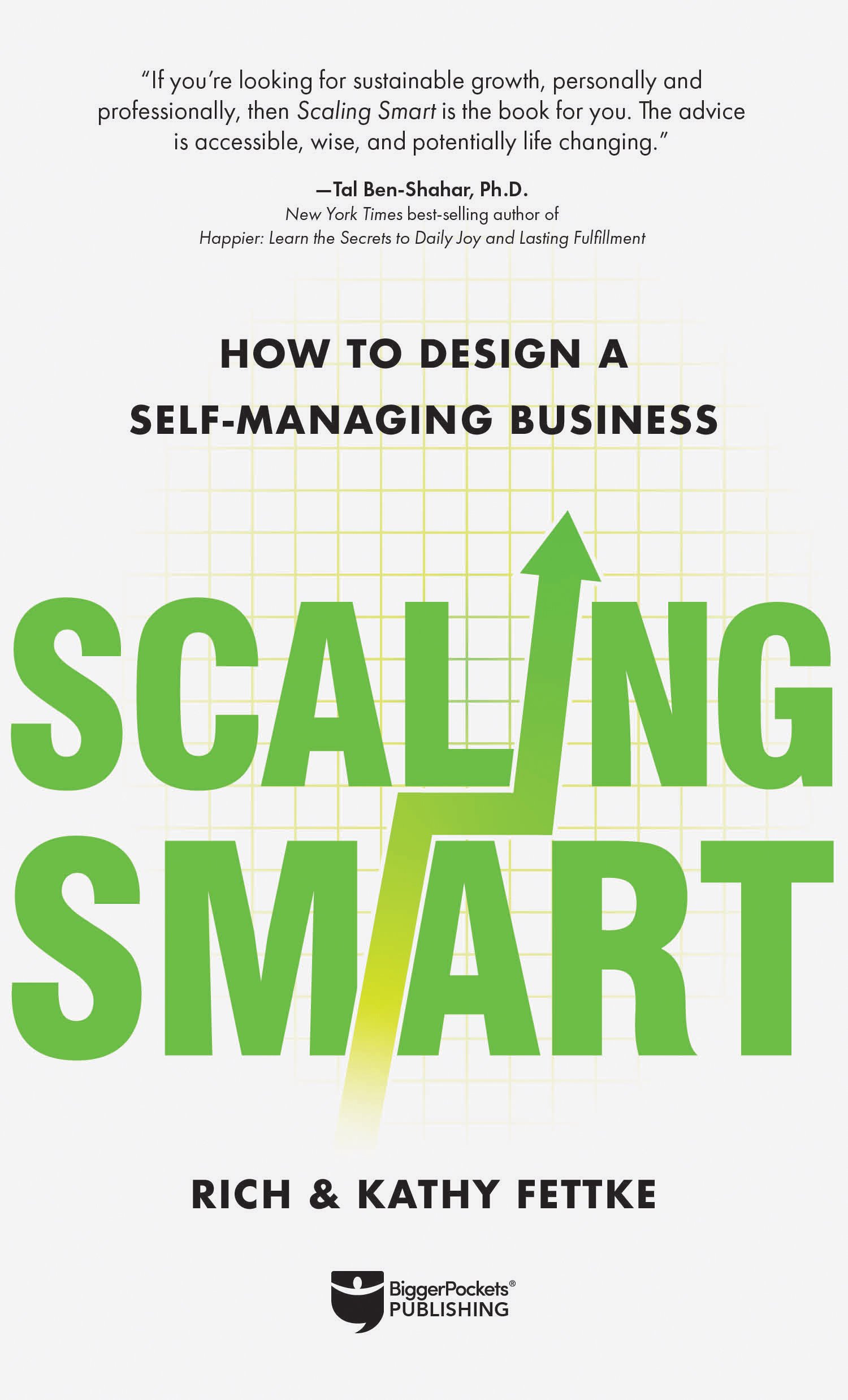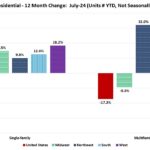Nearly every day, there’s a new article on emerging real estate markets, boomtowns, or the next hottest metro for investors. It can be confusing and overwhelming trying to figure out which one is right for you.
Most articles you see online touting the next best real estate market are usually speaking to homebuyers, not investors. Keep that in mind when perusing those articles.
Before diving in to study all the data on different markets, first determine what you want the market to do for you. Real estate investing encompasses many varying asset classes and business models. A single-family home investor may be looking for something different from a storage operator, and a multifamily operator may need different metrics than an industrial real estate company.
The first question to ask yourself is, “What do I hope to achieve from this?” My husband Rich and I wrote about the importance of this question in our new book, Scaling Smart, published by BiggerPockets.
As simple as it sounds, knowing what you ultimately hope to achieve is the most important step in making any financial decision. Are you looking for a quick flip for instant profit, or do you prefer cash flow today so you can retire? Or perhaps you have enough cash flow from your current job that you prefer to set yourself up for the future, thus looking for properties that will appreciate in value over time?
If you are trying to make a chunk of money now by fixing and flipping property, you may want to be in a more active market, where properties sell fairly quickly. If you are looking for cash flow today, you probably want a market where prices haven’t gone up so much that rents no longer cover expenses. And if you’re looking for appreciation over time, look for an area that’s growing steadily with both jobs and population growth.
The truth is that you can make money in any market. This process will help narrow down the market that’s right for you.
My Story
When I first started investing in real estate over 20 years ago, I was living in the San Francisco Bay Area—one of the most expensive real estate markets in the world. I was a mortgage broker at the time, and was able to see the full real estate portfolios of many local investors when they came to me for loans or refinances.
The numbers made no sense to me, as most of their properties were negative cash flow, or required massive down payments just to make them break even. I thought there had to be a different way.
On my radio show at the time on KSFO, I had the opportunity to interview very successful investors to learn their secrets. One of those investors was Robert Kiyosaki, author of Rich Dad Poor Dad. He taught my audience and me the concept of cash flow—the positive kind! Believe it or not, this was breakthrough information for us Californians at the time.
Kiyosaki explained on my show how he was investing in Dallas because of the strong job growth, population growth, and affordable housing. I flew to Dallas shortly after the interview to better understand the market and came back with five properties. I couldn’t believe how inexpensive they were, and how much they cash flowed. It was nothing I’d ever seen before.
I talked about it on the RealWealth show, and suddenly our phones blew up with people wanting to do the same. That’s when we formed the Real Wealth Network: to help people understand the ins and outs of investing out of state.
Since then, I have become obsessed with understanding real estate markets and finding the best places to invest. Here are a few of the things I learned.
1. Study the Local Economy
A strong local economy is crucial for a thriving real estate market. Look for areas with:
- Job growth: A growing job market attracts more residents, which increases housing demand, as well as demand for real estate of all kinds—storage, retail, office, and industrial. Pay special attention to cities with new business developments, tech hubs, or areas where large corporations are moving.
- Low unemployment rates: A low unemployment rate is a sign of economic stability, with strong demand for homebuyers and renters.
- Diverse industries: Markets that are dependent on one or two industries come with higher risk. A diverse economy reduces the risk of severe economic downturns.
2. Analyze Population Trends
Population growth is another critical factor when it comes to the health of a real estate market. Here’s what to look for:
- Migration patterns: Are people moving into or out of the area? Cities with inbound migration trends also have higher housing demand and, therefore, better investment opportunities. Today, the Southwest is seeing the highest migration.
- Demographic shifts: Pay attention to the age and income levels of the population. Areas attracting young professionals may thrive with Class A multifamily or single-family homes. An area with more blue-collar workers may need more affordable housing, and a town that attracts more retirees might thrive with senior living spaces with amenities.
3. Evaluate Housing Supply and Demand
A good real estate market has a healthy balance of supply and demand. Here are some ways you can research it:
- Vacancy rates: Low vacancy rates indicate high demand for rentals, with low supply of available inventory. This can raise both rents and asset values.
- New construction: A high rate of new construction could indicate that the market is expanding, which is good. However, too much new construction can lead to an oversupply of housing, which could lead to rental declines and price drops. Check the number of permits versus the number of new jobs.
- Housing inventory: If properties are selling quickly in an area, it might be due to low supply of housing inventory, which could lead to higher price appreciation.
- Days on market (DOM): Low DOM indicates homes are selling quickly, often due to high demand. If DOM is high, it could indicate there’s not enough demand compared to inventory.
4. Investigate Infrastructure Developments
When an area is slated for growth, you will see large infrastructure developments, which can significantly impact real estate values. Here’s what to look for:
- Transportation: New or expanded highways and/or airports are a great sign the metro area is growing rapidly.
- Amenities: New schools, parks, and hospitals are also a good sign the area is booming.
- Urban development plans: Look for cities that are planning for new projects like large commercial centers, sports arenas, or cultural institutions. It can take decades for these projects to get approved, which means others have done significant due diligence to make those decisions. You can ride this wave.
5. Never Underestimate the Power of Local Expertise
Work with local real estate agents, property managers, and other real estate investors to get “boots on the ground” insights into a market’s dynamics that data alone might not reveal.
- Local real estate agents: They have firsthand knowledge of neighborhood trends, buyer behavior, DOM, and property values.
- Property managers: They can provide invaluable insights into rental demand, tenant preferences, and more accurate rental rates.
- Real estate investors: Connect with other investors who have experience in the market. They can share their successes, challenges, and tips. Nearly every metro area has an investor networking group you can tap into.
6. Consider the Regulatory Environment
The regulatory environment of a city or metro area can have a significant impact on your investment.
- Know your zoning laws: If you hope to renovate a property, be sure to know what’s allowed. In some municipalities, rental property renovations have more restrictions and require more oversight than a primary residence.
- Study landlord laws: If you are a buy-and-hold investor, you will want to know the process for eviction. Find out if there are restrictions on how much you can raise rent. Ask if there are different property tax rates for investment property. If you want short-term rentals, ensure you understand the local laws and potential future laws. One change in the code could wipe out your investment plan.
- Understand property taxes: High property taxes can wipe out cash flow. Be sure you understand how property taxes are assessed and when.
7. Utilize Real Estate Market Research Tools
There are several online tools and resources available to help you analyze real estate markets:
- Zillow, Redfin, and Realtor.com: Property listings, market trends, and price data.
- NeighborhoodScout: In-depth neighborhood analysis, crime rates, and school ratings.
- Local government websites: Information on urban planning, zoning laws, and infrastructure developments.
- BiggerPockets: Check out our tools, including the Rent Estimator, Market Finder, and Deal Finder.
Final Thoughts
Finding the best real estate markets is a blend of both art and science. It requires deep understanding of local economies, demographic shifts, supply and demand, market trends, and more. By leveraging data, staying informed, and connecting with local experts, you can position yourself to make smart, profitable investments.
Happy investing!
Increase your wealth and free up your time.
Take your business to the next level with this “accessible, wise, and potentially life changing” guide to sustainable growth perfect for entrepreneurs and investors (Tal Ben-Shahar, Ph.D., New York Times bestselling author of Happier).
Note By BiggerPockets: These are opinions written by the author and do not necessarily represent the opinions of BiggerPockets.




